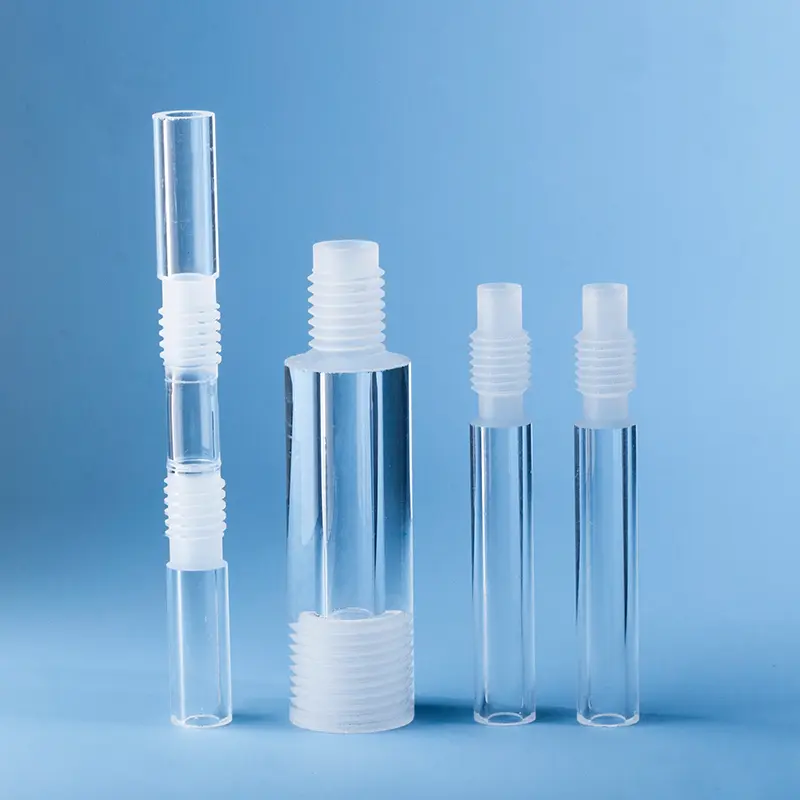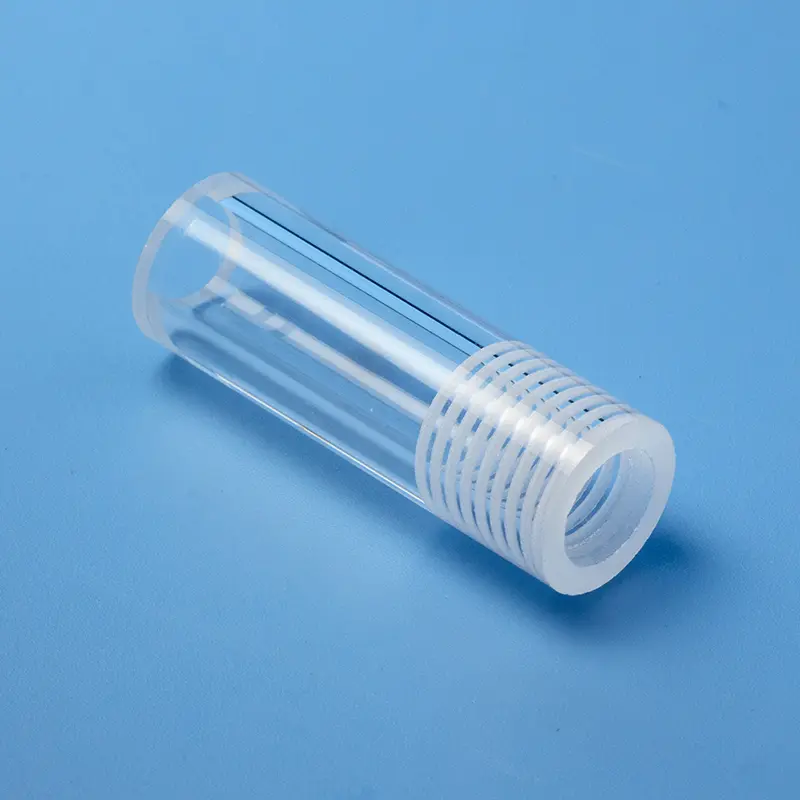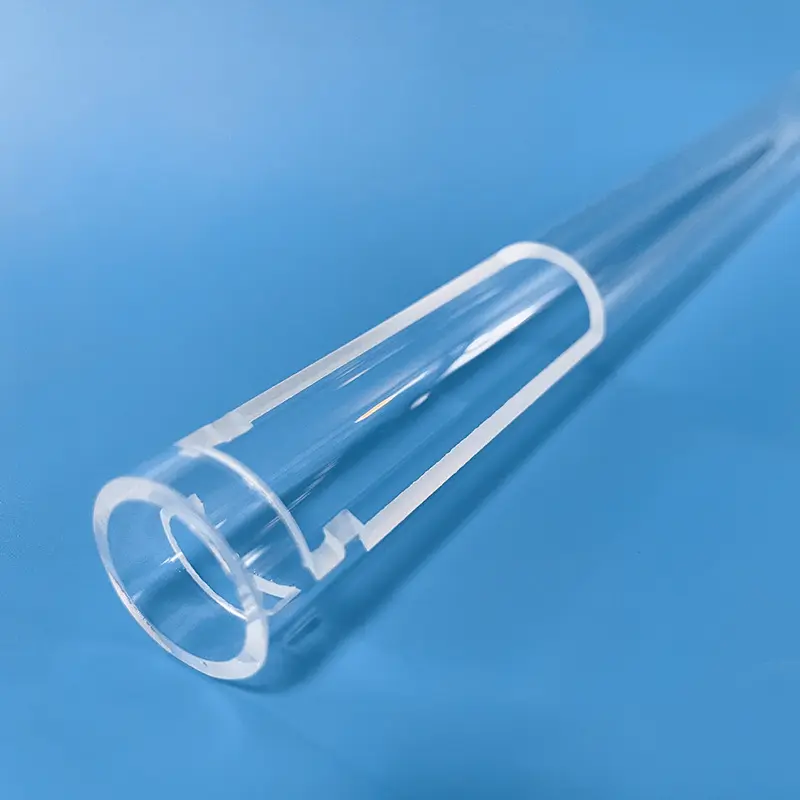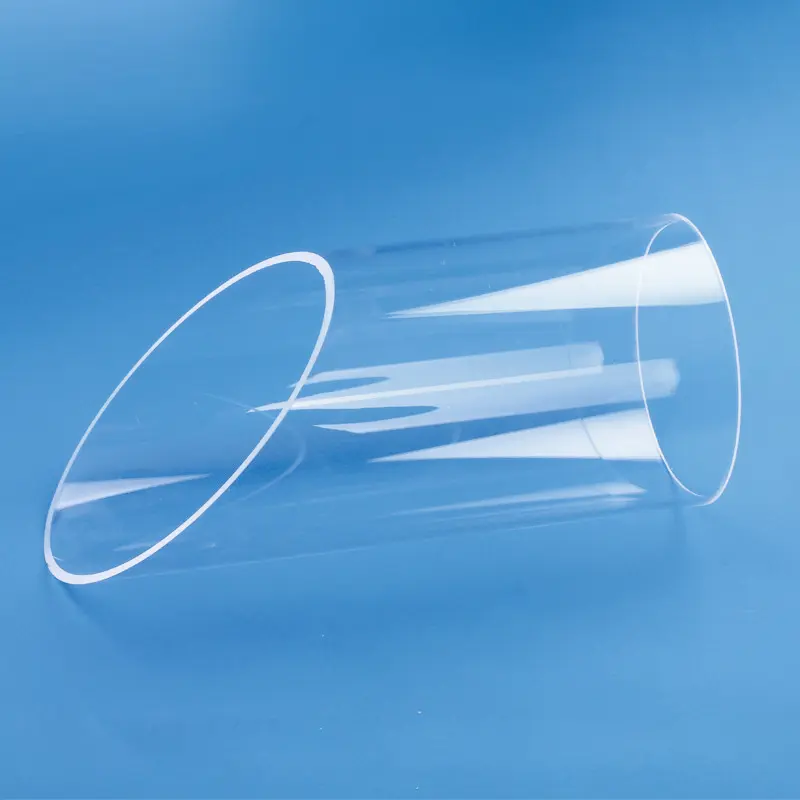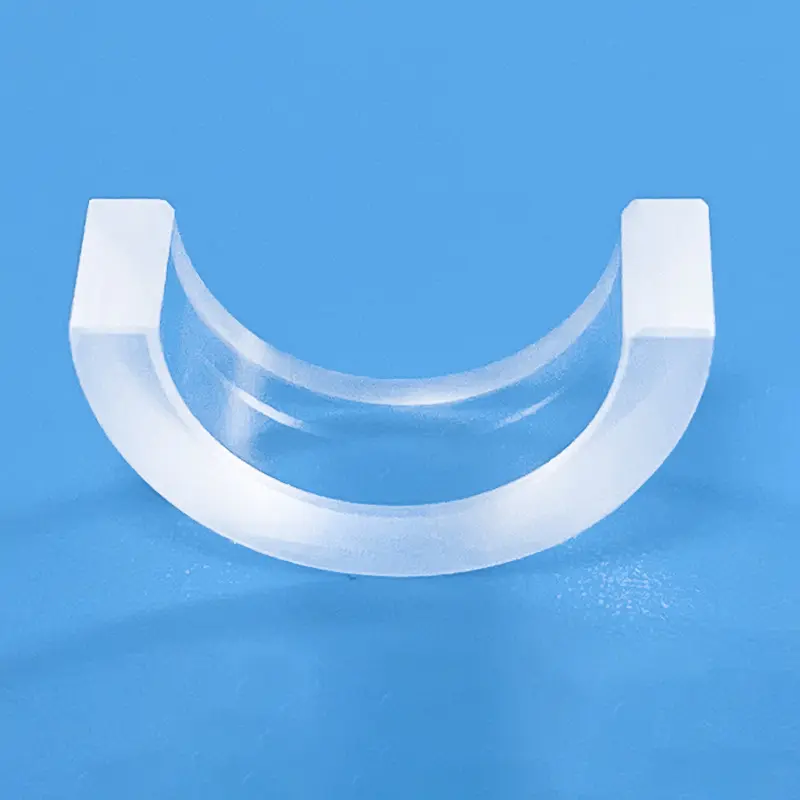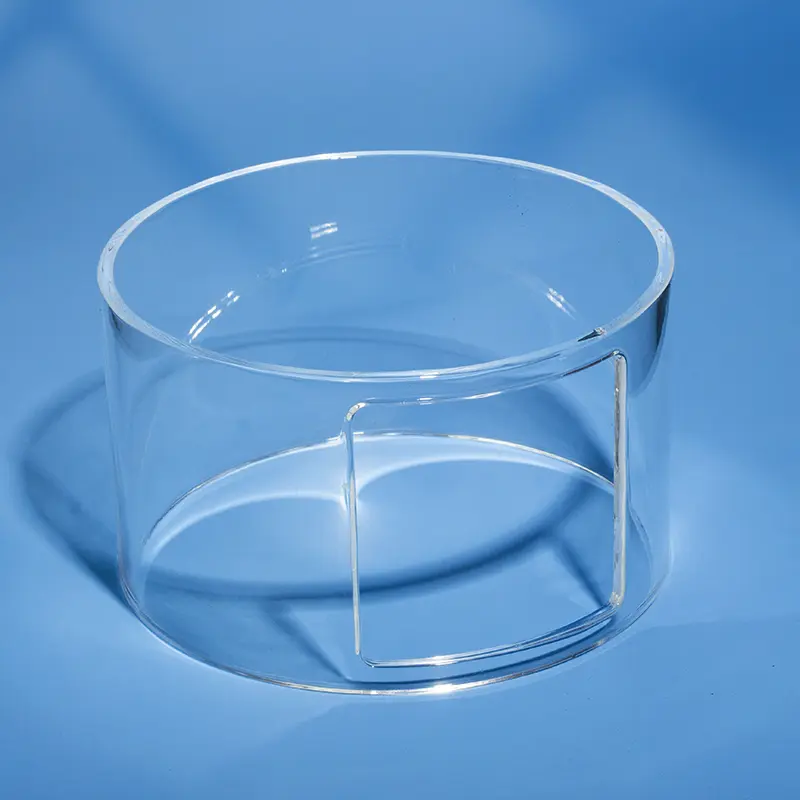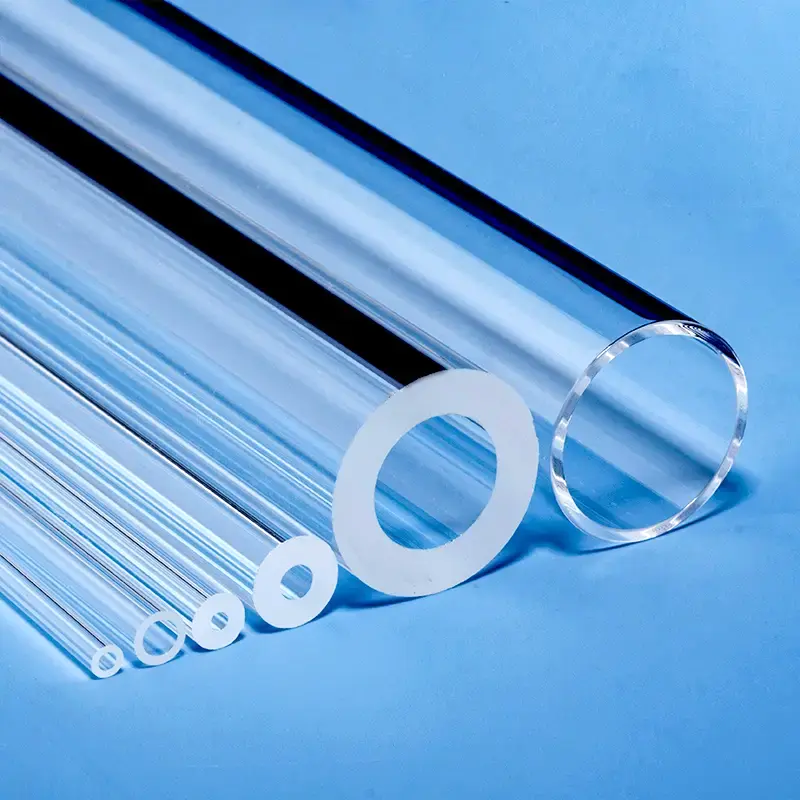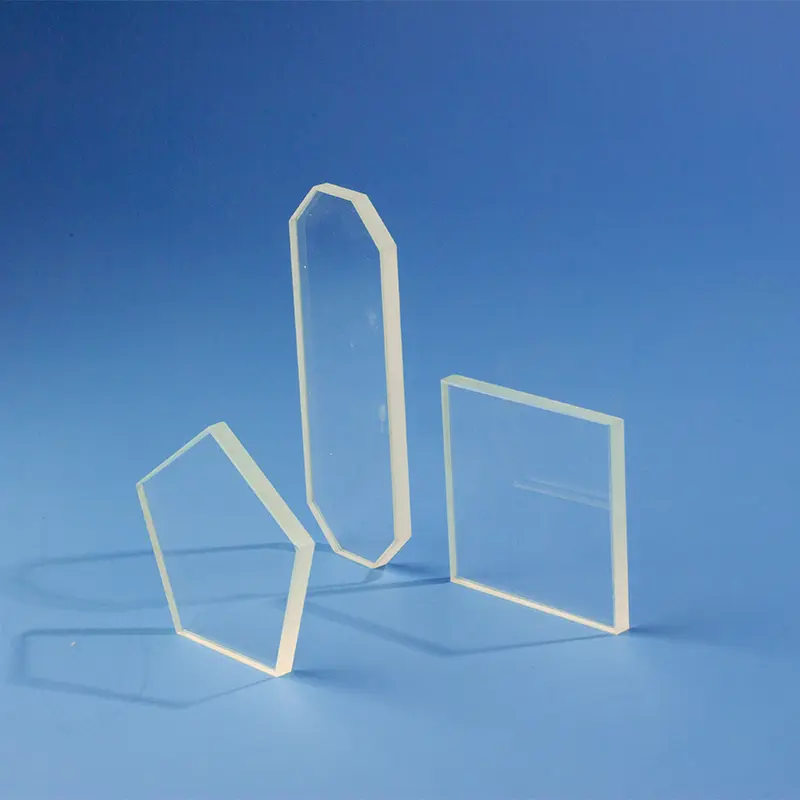Nuestras avanzadas capacidades de perforación láser permiten la creación de micro-agujeros precisos, patrones complejos y características intrincadas directamente en tubos de vidrio de cuarzo de alta pureza y tuberías de sílice fundida. Este proceso sin contacto garantiza una precisión excepcional, una mínima tensión del material y bordes limpios y sin rebabas, lo que lo hace ideal para aplicaciones que exigen la más alta precisión geométrica. Desde canales microfluídicos y boquillas de instrumentos analíticos hasta aberturas ópticas y componentes semiconductores, nuestras soluciones personalizadas de tubos de cuarzo perforados con láser están diseñadas para cumplir sus especificaciones exactas de diámetro, profundidad y ubicación. Aproveche las propiedades térmicas, químicas y ópticas superiores del cuarzo con la precisión inigualable del procesamiento láser en forma de tubo
| Contenido de la propiedad | Valores de la propiedad |
|---|---|
| SiO2 | 99.99% |
| Densidad | 2,2×10³ kg/cm³ |
| Dureza | Dureza Mohs de 5,5 a 6,5; Dureza Knoop 570 (con una carga de 100g) |
| Resistencia a la tracción | 4,8 × 10⁷ Pa (48 N/mm² o 48 MPa); 7.000 psi |
| Resistencia a la compresión | >1.1×10⁹ Pa (160,000 psi) |
| Coeficiente de dilatación térmica | 5.5×10⁻⁷ cm/cm·°C (20°C-320°C) |
| Conductividad térmica | 1,4 W/m-°C |
| Calor específico | 670 J/kg-°C |
| Punto de ablandamiento | 1730°C (3146°F) |
| Punto de recocido | 1210°C (2210°F) |
| Punto de deformación | 1120°C (2048°F) |
| Temperatura de trabajo | 1200°C (2192°F) |
| Resistividad eléctrica | 7×10⁷ ohm cm (350°C) |
| Tamaño | Personalizado |
| Logotipo | Se acepta el logotipo personalizado |
La perforación láser utiliza un rayo láser de alta energía para ablacionar o fundir el material del tubo de cuarzo, creando así orificios. La alta densidad de energía y el enfoque preciso del rayo láser permiten un proceso de perforación rápido y preciso, al mismo tiempo que previenen los daños y la deformación del material que a menudo se asocian con la perforación mecánica tradicional.
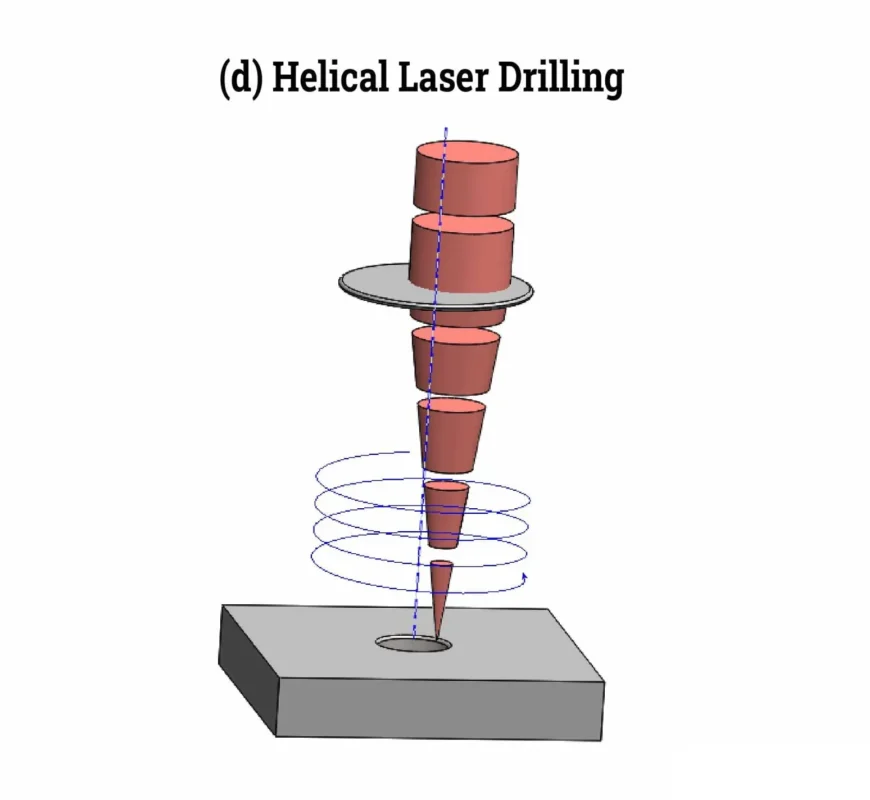
Alta precisión
La perforación láser permite la creación de orificios de alta precisión, asegurando la exactitud del mecanizado de tubos de cuarzo y la calidad del producto final. Los diámetros de orificio alcanzables pueden ser tan pequeños como 1 micrómetro, cumpliendo los requisitos de la microfabricación
Alta eficiencia
La perforación láser es un método de mecanizado altamente eficiente, capaz de completar tareas de perforación de gran volumen en poco tiempo, lo que aumenta significativamente la eficiencia de la producción. La velocidad de perforación es de 10 a 1000 veces más rápida que la de los equipos mecánicos tradicionales.
Proceso sin contacto
La perforación láser es un método de mecanizado sin contacto que evita cualquier daño o contaminación en la superficie del tubo de cuarzo, asegurando la integridad del producto final.
Excelente controlabilidad
La tecnología de perforación láser permite la creación de orificios de diversas formas y tamaños según los requisitos reales. Mediante el ajuste de la potencia del láser y los parámetros de procesamiento, se puede lograr un control preciso sobre el tamaño y la forma de los orificios.
Selección de equipos
Al elegir el equipo de perforación láser, seleccione modelos y configuraciones apropiadas según las necesidades de procesamiento y el presupuesto. Además, considere la marca y la calidad del equipo para garantizar su estabilidad y fiabilidad.
Ajuste de los parámetros del proceso
Durante el procesamiento, ajuste los parámetros según el material, el grosor y los requisitos de procesamiento del tubo de cuarzo para lograr resultados óptimos.
Precauciones de seguridad
La perforación láser genera radiación láser intensa y altas temperaturas. Por lo tanto, se deben seguir las precauciones de seguridad, como usar gafas y ropa protectoras.
Mantenimiento y conservación
Realice el mantenimiento regular del equipo de perforación láser, que incluye la limpieza de la lente, la verificación del sistema de refrigeración y el reemplazo de las piezas desgastadas, para garantizar el funcionamiento normal y prolongar la vida útil del equipo.
Preguntas más frecuentes
Nos especializamos en la fabricación integral de componentes de vidrio de cuarzo de alta pureza. Nuestras principales líneas de productos incluyen:
Tubos y varillas de cuarzo: Una amplia gama de diámetros y especificaciones.
Placas y discos de cuarzo: Corte de precisión y pulido para uso óptico e industrial.
Cristalería de laboratorio de cuarzo: Una suite completa de cristalería estándar y personalizada, incluyendo vasos de precipitados, matraces y barcas.
Cuarzo de grado semiconductor: Componentes de alta pureza como tubos de proceso y portadores para la fabricación de semiconductores.
Componentes fabricados a medida: Podemos producir piezas complejas adaptadas a sus diseños y especificaciones únicas.
Sí. La fabricación personalizada es el pilar central de nuestro negocio. Con más de una década de experiencia especializada, nos asociamos con empresas para ofrecerles servicios expertos de OEM/ODM. Nuestras capacidades incluyen soldadura, rectificado, perforación, pulido, doblado y otras técnicas de mecanizado de precisión para crear componentes que cumplan con sus requisitos exactos.
La calidad es primordial en nuestro proceso de fabricación. Somos un fabricante certificado ISO 9001:2015, lo que garantiza que nuestros procesos cumplen con los estándares internacionales de gestión de calidad.Nuestros productos también se someten a rigurosas pruebas SGS de pureza y rendimiento. Utilizamos materias primas de alta pureza (hasta 99,998% de SiO2) para producir productos de cuarzo fundido y sílice fundida con una estabilidad térmica excepcional, alta resistencia a la temperatura e inercia química.
Hemos optimizado nuestro proceso para que sea lo más eficiente posible:
Envíe su Solicitud de Cotización (RFQ): Envíenos sus dibujos técnicos, especificaciones y requisitos a través de nuestro formulario de contacto en el sitio web o por correo electrónico.
Respuesta rápida: Puede esperar una respuesta inicial en cuestión de minutos y una comunicación detallada en media hora.
Diseño y Propuesta: Le entregaremos una propuesta de diseño detallada y un presupuesto competitivo en 24 horas.
Prototipado y Producción: Tras la aprobación, pasamos rápidamente del prototipado a la producción a gran escala para cumplir con sus plazos de entrega.
Asociarse con Aoxin Quartz ofrece varias ventajas clave:
Experiencia comprobada: Con más de 10 años en la industria, poseemos el conocimiento técnico para abordar desafíos complejos.
One-Stop Solution: We manage the entire production process, from sourcing high-purity raw materials to fabricating and finishing complex components.
Valor competitivo: Ubicados en un importante centro de producción de cuarzo, aprovechamos una cadena de suministro eficiente y una fabricación avanzada para ofrecer una calidad excepcional a un precio competitivo.
Dedicated Partnership: Over 90% of our clients become long-term partners. We are committed to your success through responsive service, reliable quality, and innovative solutions.


